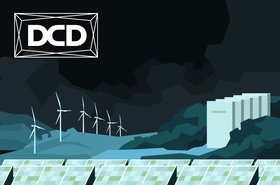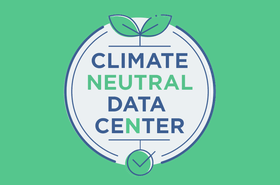All those hoping for an environmental silver lining to lockdown in 2020 were to be disappointed by the UN Emissions Gap Report 2020 released in December. There were noticeable reductions in greenhouse gas emissions, but not anywhere near enough to bring us back from the brink.
“Covid-19 containment measures have significantly reduced global GHG emissions in 2020,” says the report, “However, unless these are followed by economic rescue and recovery measures that support low-carbon transition, this dip…is estimated to result in no more than a 0.01 percent reduction…by 2050,." Given that, temperature rises are set to exceed1.5°C.
The glimmer of hope is that a more ambitious crop of net-zero commitments have come out of 2020. With a number of governments announcing low carbon recovery plans there might be longer lasting change. We may, the report says, limit global warming to 2.5-2.6°C by the end of the century. This is more of an increase than climate scientists would like to see but still an improvement on the over 3°C change. However, these policies will need to be supported by practical roadmaps by high energy use industries, backed up by quantifiable measures of change.
So, where is the opportunity for the data center sector to help with this and how does research help?
Hear from Techbuyer in The Circular Economy Hour, at DCD>Towards Net-Zero, 24-25 February
Stuff you probably already know
Without getting into an argument about numbers here, we know that the impact of data centers on energy usage is significant. We also know that sector growth is predicted to be a steep upward curve in the next ten years. We also know that the efficiency gains achieved by economies of scale are not going to work as machine learning drives increased numbers of edge data centers.
It is also true that, while PUE is an excellent metric in one regard, it does nothing to address how much compute bang we get for our energy buck. The Uptime Institute has been succinct in illustrating this, for example at this DCD Stockholm event in April of last year. With IT hardware responsible for 65 percent of a data center’s energy draw, it seems sensible to address efficiencies here. Although cloud is a great option for some parts of an organization’s workload, many will also need their own data centers as part of a hybrid solution. So, what advice can we give to this area of the sector and what impact will this advice have?
What governments are doing about it
In most countries, the public sector is the major purchaser for ICT. Governments recognized this, and have released a number of policies that aim to reduce carbon spend internally and mandate reductions in the supply chain. In the UK Defra’s latest Greening government: ICT and digital services strategy 2020-2025 sets some ambitious targets for the IT sector on Scope 2 and 3 emissions, plus a percentage increase in refurbished and remanufactured hardware by 2025. In the EU, Green Public Procurement does something similar for end touch devices and the Ecodesign Directive Lot 9 focuses on minimum energy efficiency of servers to reduce scope 2 emissions and support of secondary devices to reduce scope 3 emissions. Similar moves are underway in the US and Australia.
Changing mindsets
There is a level of operational detail that is missing at governmental level that only sector insiders are able to fill. This is where metrics that honestly measure the size of emissions can help, and that data analysis is best focused on the IT hardware. Since this is responsible for 65 percent of a facility’s overall energy usage, the opportunity at use phase is obvious. It is also true that the hardware is environmentally expensive to produce, and that prolonging the life of assets will further reduce carbon footprint.
While it may have been true ten years ago that increased energy efficiency in CPUs dwarfed the embodied carbon savings by reusing hardware, the traditional mindset has been turned on its head by research. A recent IEEE paper co-authored by UEL academics and Techbuyer staff Optimizing server refresh cycles: The case for circular economy with an aging Moore's Law demonstrates the case for a circular economy in hardware refresh from a cost, energy and performance standpoint. There is a sweet spot for reducing IT turnover and optimizing energy efficiency. The time is now to capitalize on it.
Why we care about Scope 3
National carbon reporting is restricted to direct emissions and indirect emissions through energy usage. The rationale is that, while consumption is the driver of mining, manufacture and transport of new goods, manufacturing countries report emissions at their end. Domestic and international shipping and aviation contribute around five percent of global greenhouse gas emissions. However, around 71 percent of shipping CO2 emissions and 65 percent of aviation emissions are international – therefore included in national totals. The digital sector is in a strong position to address this.
Firstly, digital communication is a huge tool in avoiding transport emissions by taking meetings online. Secondly, mapping the material flow for IT hardware takes us from the developing world to the developed world, and often back again at end of life, representing significant carbon cost. Finally, short refresh cycles increase the quantity of all this. We are all aware that some materials in ICT are predicted to run out within decades with the current use rate. If you add on the embedded carbon to this (just shy of a metric tonne per server according to some estimates), you are looking at a significant carbon risk. With so many data centers moving towards renewables in the energy mix, the focus has to shift towards the contents of the hardware and which savings can be made there.
Where next
Studies like the IEEE paper mentioned above shine a light on one part of the carbon puzzle for data centers. It shows one-way decision-makers can combine circular economy with energy efficiency with respect to the IT hardware. However, there are many other, larger areas we need to address in other specialisms like the circular energy systems, clean energy provision and so on. Use of these studies, and discussion forums like DCD, are an important way of developing thinking. We need to constantly explore different avenues if we are going to find a way to limit global warming. Technological innovation got us into this and it is also our best way out.




